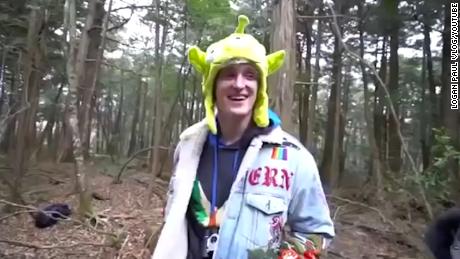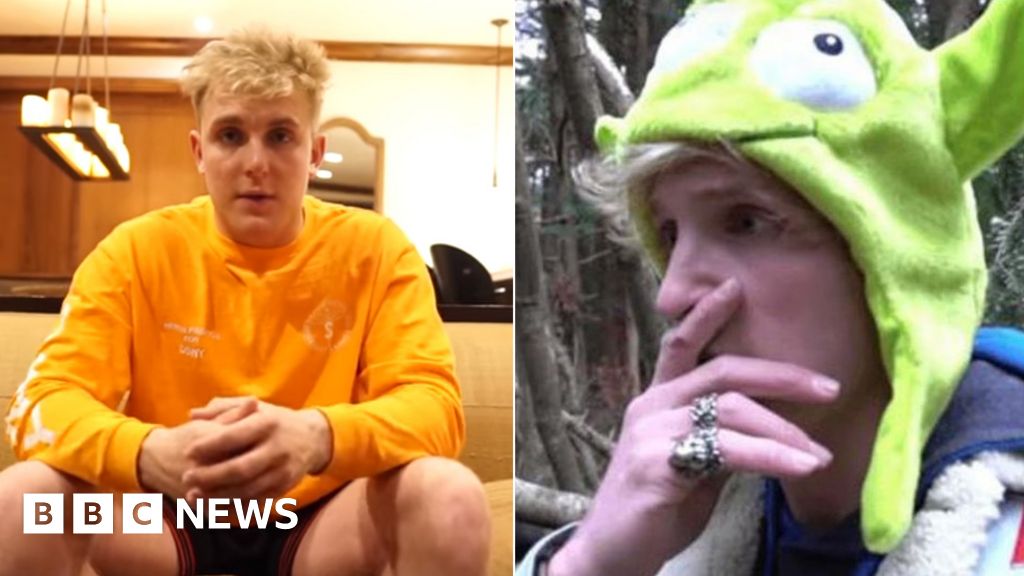The Unforgettable Controversy: Revisiting Logan Paul And The "Suicide Forest" Video
The Incident Unfolds: A "Haunted" Forest and a Tragic Discovery
At the close of 2017, Logan Paul, an American influencer, professional wrestler, entrepreneur, boxer, and actor with a massive following of over 15 million subscribers on YouTube, embarked on a trip to Japan. Accompanied by friends and his crew, Paul's intention was to film content for his popular vlog channel. One of their planned stops was the Aokigahara forest, located at the base of Mount Fuji. This dense woodland has an international reputation, sadly known throughout the country and globally as the "Suicide Forest" due to its infamy as a frequent site of suicides. Paul and his crew entered the forest with the stated aim of filming a "haunted" experience, intending to capture the eerie atmosphere of the notorious location. However, their exploration took a horrifying turn when they stumbled upon what appeared to be a body hanging from a tree – a man who had died by suicide. Instead of immediately ceasing to film and contacting authorities discreetly, Paul continued to record the scene. The now-deleted video, which was also accompanied by similar footage posted by friends of Mr. Paul, showed the deceased man, albeit with his face blurred. Paul and his friends reacted with shock and inappropriate humor, making comments and close-up shots of the body. The video, titled "We found a dead body in the Japanese Suicide Forest...", was uploaded to Paul's YouTube channel and quickly garnered over six million views before it was taken down. The decision to film and publish such sensitive content, especially given the context of Aokigahara forest, immediately sparked a firestorm of criticism.The Immediate Fallout: Public Outrage and "Public Enemy Number One"
The backlash was swift and severe. The video was widely condemned for its insensitivity, disrespect for the deceased, and its trivialization of suicide, a deeply serious and tragic issue. Viewers, mental health advocates, and fellow content creators alike expressed their disgust and anger. Many found it exploitative and a blatant attempt to sensationalize human suffering for views and engagement. Logan Paul, who had previously enjoyed immense popularity among a young audience, became "public enemy number one" almost overnight. The sheer volume of negative reactions was unprecedented. People were not only appalled by the content but also by Paul's initial reactions within the video, which seemed to lack genuine empathy or understanding of the gravity of the situation. Some members of the public even went as far as telling Paul to "kill himself" in response to his actions, highlighting the extreme emotional response the incident provoked. The controversy dominated news cycles, putting a spotlight on the ethical responsibilities of influencers and the power they wield over their impressionable audiences. It also raised critical questions about the platforms that host such content.YouTube's Response and Logan Paul's Apologies
Initially, YouTube faced criticism for its perceived inaction. For nearly two weeks after the video was posted, the platform did not take significant public steps, leading to sharp criticism about YouTube’s failure to moderate content properly, especially a video showing a dead body. This delay fueled further outrage, with many questioning YouTube's commitment to its own content guidelines and its responsibility to protect its users from disturbing material. Eventually, YouTube did respond. While the video was ultimately removed, the platform also took punitive measures against Paul. He was removed from Google Preferred, an advertising program that groups top-tier content creators for advertisers, and his original series projects were put on hold. This effectively impacted his earning potential on the platform, of which he was one of the top earners. In response to the overwhelming condemnation, Logan Paul issued multiple apologies. He posted a written apology on Twitter, stating, "Where do I begin... I'm sorry. This is a first for me. I've never faced criticism like this before, because I've never made a mistake like this before." He followed this with a video apology, expressing regret for his actions and acknowledging the profound disrespect he showed. He admitted his judgment was "clouded" and that he "didn't do it for the views." However, years later, Paul made a controversial statement in a podcast episode, referring to the 2017 incident as a "blessing" that forced him to change. This comment reignited some of the old criticisms, with many finding it an inappropriate way to frame such a tragic event, even if it did lead to personal growth.Wider Implications and Lasting Impact
The "Suicide Forest" video had far-reaching implications beyond Logan Paul's immediate career. * **Creator Responsibility:** It served as a stark reminder of the immense influence content creators hold, especially over younger audiences. The incident prompted a broader discussion about the need for ethical guidelines, media literacy, and a greater sense of responsibility from those who produce content for mass consumption. * **Platform Moderation:** YouTube's initial slow response and the subsequent measures highlighted the challenges faced by large platforms in moderating vast amounts of user-generated content. It intensified calls for more robust content review processes, faster removal of harmful material, and clearer enforcement of community guidelines. * **Legal Ramifications:** The fallout from the video even led to legal action. A production company sued Logan Paul, claiming that the controversy caused it to lose a deal, demonstrating the tangible financial and reputational damage that can result from such incidents. * **Mental Health Awareness:** While inadvertently, the controversy also brought the topic of suicide and mental health into the mainstream conversation, albeit through a negative lens. It underscored the importance of treating such sensitive topics with extreme care and respect. The Logan Paul "Suicide Forest" video remains a pivotal moment in internet history, a cautionary tale that continues to be referenced when discussing online ethics and accountability.A Final Summary
The 2017 incident involving Logan Paul filming a deceased suicide victim in Japan's Aokigahara forest, known as the "Suicide Forest," sparked immense global controversy. Paul's video, which showed a dead body hanging and featured inappropriate reactions from him and his friends, was widely condemned for its insensitivity and exploitation of a tragic situation. Despite Paul's apologies and YouTube's subsequent disciplinary actions (including removing him from top-tier programs), the event led to Paul being labeled "public enemy number one" and raised critical questions about content creator responsibility, platform moderation, and the ethical boundaries of online entertainment. The incident had lasting impacts, prompting discussions on mental health awareness and even leading to legal action against Paul.
logan-paul-suicide-forest-how-to-talk-with-kids

Inside Japan's 'suicide forest' - CNN

Logan Paul 'suicide video': Brother says he 'did not mean to offend